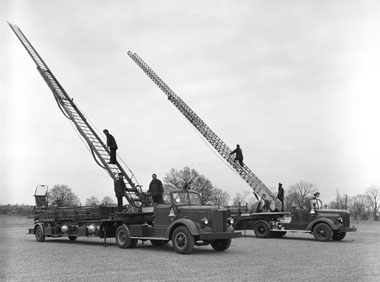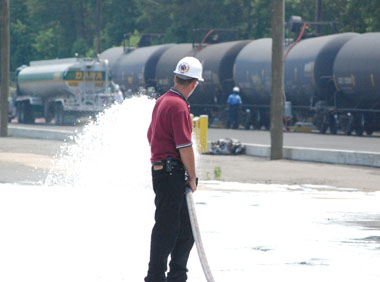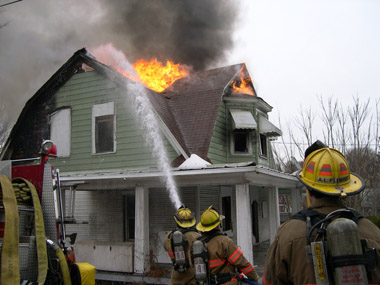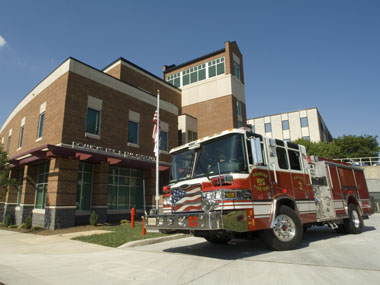
Courtesy of the Library of Virginia

Courtesy of the Virginia Municipal League
Appendix 11
Fire and Emergency Medical Services
Local governments deliver fire and emergency services in a variety of ways, including paid professional local government employees, volunteers, private sector contracts, or a mix of these options. In some cases fire and emergency medical services are delivered by the same personnel, but in other cases different personnel deliver each type of service.
In addition to the usual characterization of firefighters who race to fires, chop down doors, and dash into burning buildings to save lives, firefighters also provide services in the area of fire prevention, hazardous materials (HAZMAT) incidents, rescue, emergency medical treatment, and emergency management.
Fire brigade Courtesy of the Library of Virginia |
Training exercise Courtesy of the Virginia Municipal League |
Additionally, the enforcement of certain building codes is an essential element in fire prevention. Fire personnel conduct audits to ensure that buildings meet minimum standards in areas of electrical systems, fire retardant materials, sprinkler systems and other fire suppression measures, and accessible exits.
The location of fire and emergency medical units and the availability of adequately trained personnel are critical for providing lifesaving services to all citizens. As a result, local governments spend considerable time and money identifying the most appropriate location for their fire and emergency services facilities.
Firemen at house fire  Courtesy of the Virginia Municipal League |
Firehouse Courtesy of the Virginia Municipal League |
Fire and emergency services are staffed to respond seven days a week, 365 days a year. Thus, staffing one position means 168 hours of availability each week. Volunteers continue to play an important role in providing both fire and emergency medical services as either the primary responders in many rural areas or support for professionals in more urban environments.
Both services require considerable minimum training investments.
The fire service relies on strong water systems able to deliver significant quantities of water from key locations for extended time periods as well as an assortment of specialized equipment and tools.
Medical emergency responders also work closely with local hospitals and other medical professionals to provide on the scene assistance through specialized communications channels.